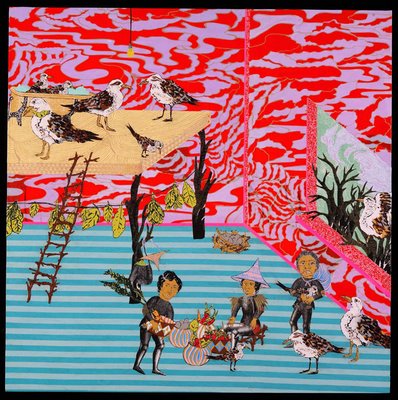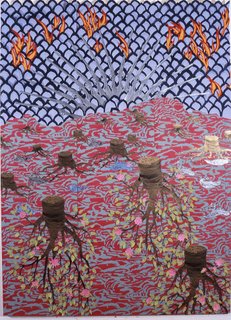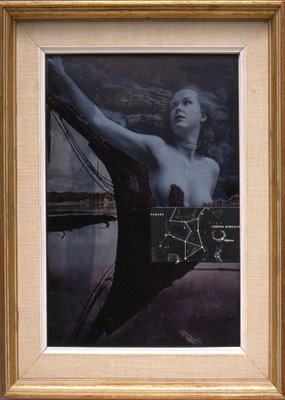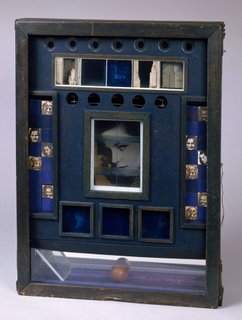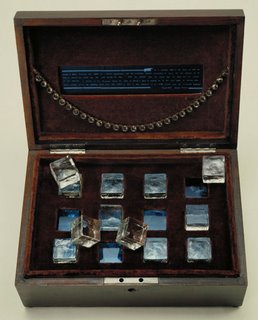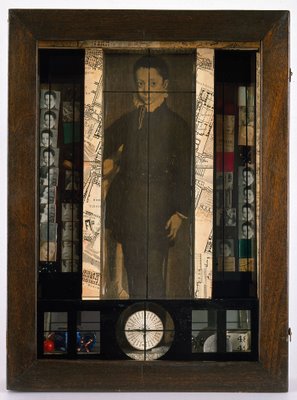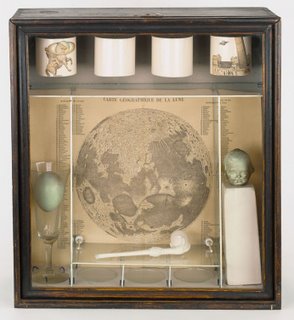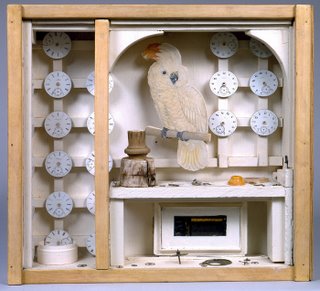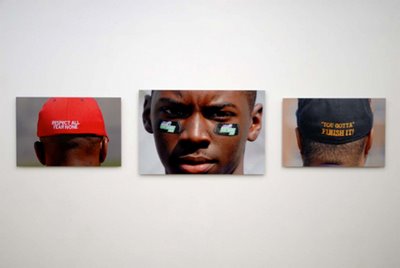
One of the best gallery shows in Boston right now is
Erik Levine’s “More Man” at Space Other gallery, which viscerally explores one of the chief rights of male initiation in American society today: high school football. Levine, who splits his time between Boston and New York, presents arty documentary photos of a coach looming over a benched player and the shadows of players stretching across the field juxtaposed with slogans splashed across T-shirts and embroidered on hats. They read: “Respect all, fear none,” “Those who stay will be champions,” “The strength of the team is the player, the strength of the player is the team,” and “We turn hatred into motivation.”
The main event is Levine’s 2005 video
“More Man.” It’s a grainy color video chopped into staccato floating images. A coach hollers at boys: “Go hit somebody.” A boy tries to rev up his teammates: “Act like they killed your mother.” Coaches shove and punch their players. Players smash into each other in practice. They chant and clap and dance – with associations to clan, tribe and gang rituals made apparent. The violence and anger are ritual – just like the truce after the game when opponents politely slap hands. A coach yells: “This is not how you play football. This is not how you gain respect. This is not how you become young men.” A coach tells boys: “You let this team down.” A coach says, “I will go to the wall for you. I will die for you … but when the year is over decide what you want to do with your life. … Be more man than the next man.”
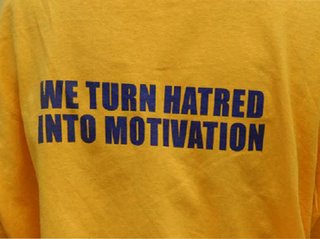
Here’s the dark heart of manhood as it’s popularly defined in America, where tradition requires adults to be assholes to kids, to shame and humiliate them. It’s a zone where slogans like “There’s no I in team” are not about working together for mutual benefit, but about the obliteration of individuals. It’s an examination of the man in the word “manhandling.” It twists my stomach into knots.
Levine’s editing tricks – like cheap imitations of early music videos – are kind of gimmicky, but the video seeps under your skin. It makes you wonder why indoctrination into manhood, as we often define it, means indoctrination into a code in which “respect” means unquestioning submission to brutal authority. It’s the code of behavior that trains hazers to believe in the righteousness of their cruelty because they’re just reenacting what was done to them coming up. It’s tradition, and tradition is how we maintain and protect our society. It’s such attitudes that make it so hard for our nation to analyze and address, say, the bloody mismanagement of our Iraq war. It’s such attitudes that portray torturers as strong, as clear-eyed, as noble. It’s a sad and sorry state of affairs.
Erik Levine, “More Man,” Space Other, 63 Wareham St., Boston, April 12 to May 12, 2007.Pictured from top to bottom: “Respect All Fear None,” giclee print, 2006, and “Hatred into Motivation,” giclee print, 2006.






